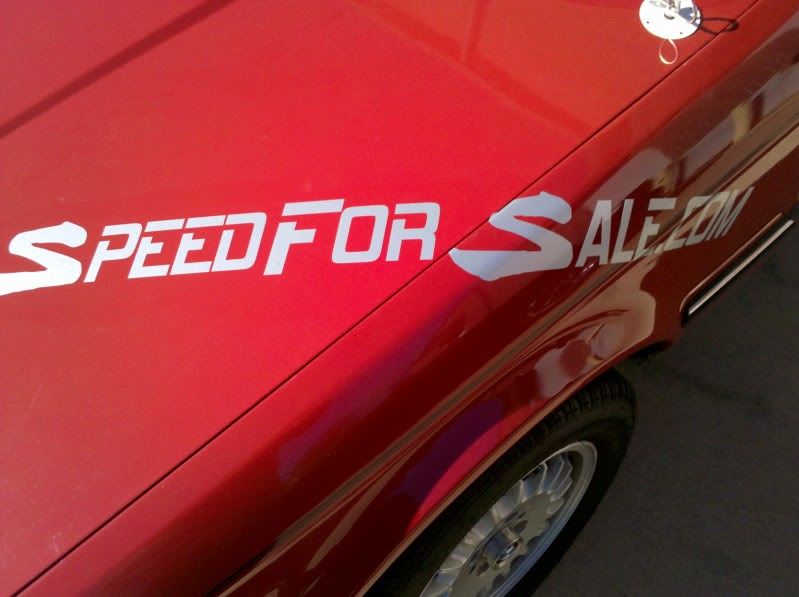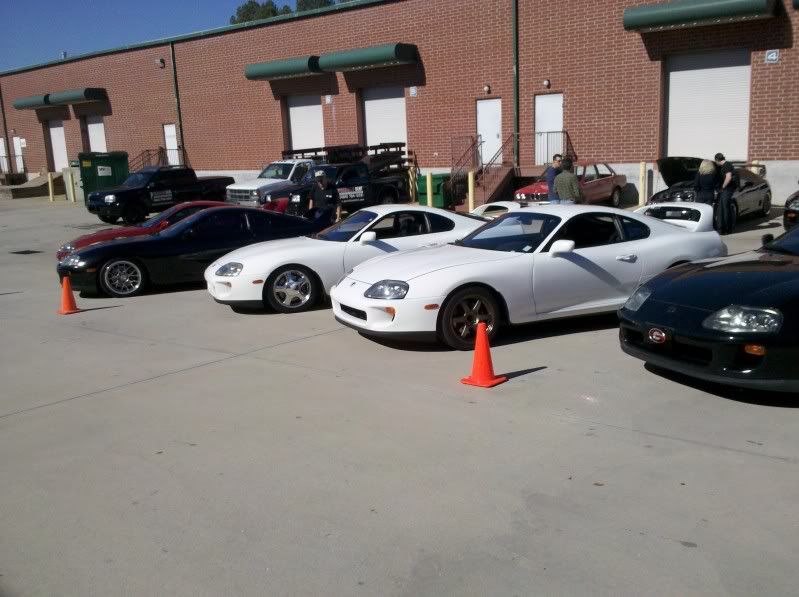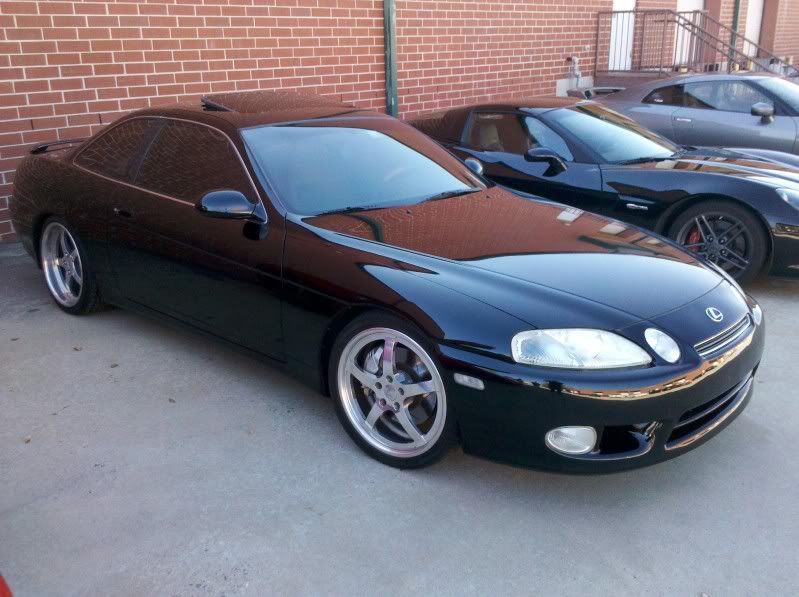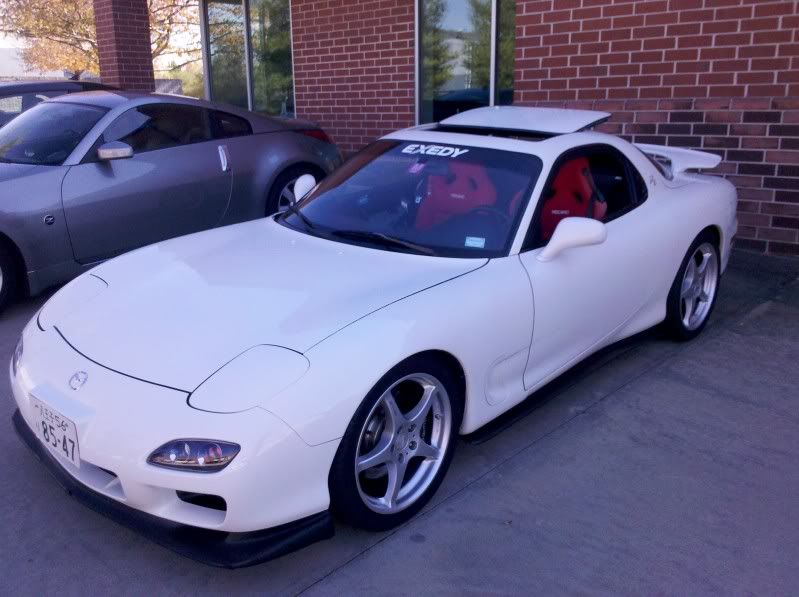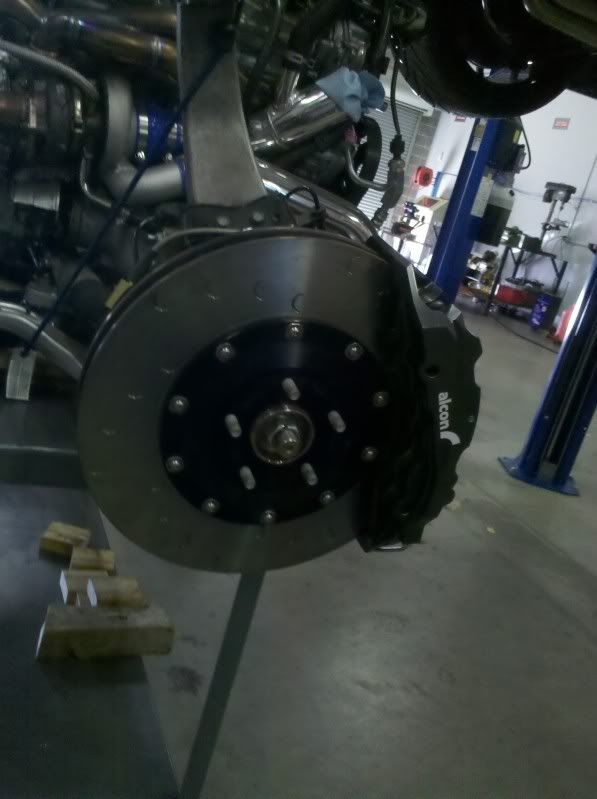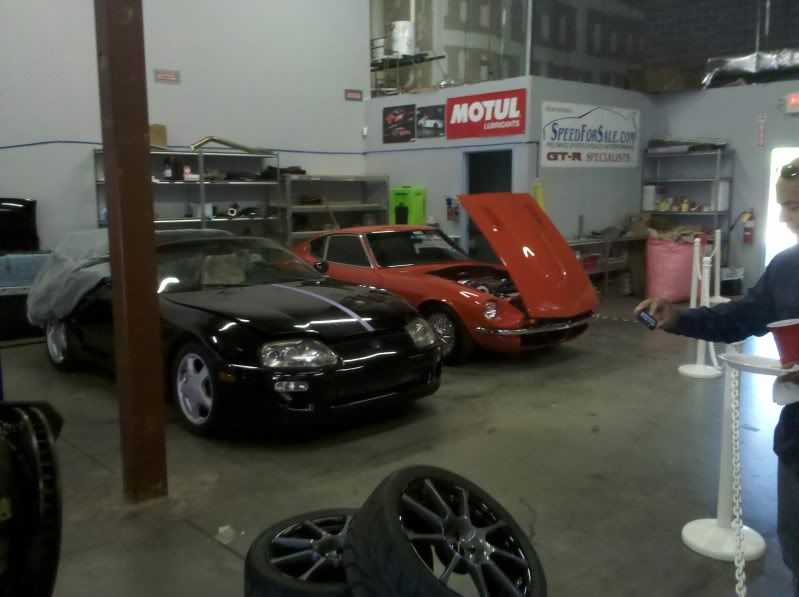Its a Honda MB5. I absolutely love it.
Two strokes are cool!
I mostly talk cars. When I talk cars, I mostly talk Porsche. I don't really like Porsche, but I am surrounded by everything related to the company. They always say, write what you know... Expect random posts about international racing of all levels, articles I have written, news, and life stuff. It'll be fun, come along on the journey with me.
Sunday, November 21, 2010
Wednesday, November 17, 2010
The first Carrera
When associating words with Porsche, a common theme shows up. A large proportion of Porsche cars have carried the moniker of Carrera. Carrera inspires visions of the recent Carrera GT supercar, several iterations of 911s, The 924 Carrera GT turbo, The 904 Carrera GTS, and of course the 356 Carrera.
When placing a name on the new 7500 RPM four-cam screamer Porsche resorted to the world of racing history. Porsche, as we know, had tremendous success with its efforts in the Mexican cross country race known as the Carrera Panamericana. Using Carrera (Spanish for “race”) to describe its most berzerk sporting car was a no brainer.
Essentially a 356A body with a Type 547 four-cam, the Carrera was a sports racing special for the street. In production, the Type 547 produced an astonishing 100 horsepower, only down fifteen horsepower from the engines that competed in the Le Mans 24 hour to increase the reliability. The car was fitted with wider rims and tires and a larger diameter steering wheel. Also, due to the additional weight of the engine, the torsion bars were tightened just a bit more. With the improvements made to the car, it hit American shores with a price tag of nearly six thousand dollars, or more than twice the starting price of the Corvette.
Common contention is though, that the Carrera was well worth the asking price. It was the first car in production to reach 200 kilometers per hour with less than 1.5 liters at its disposal, accelerated to 60 miles per hour in 11.0 seconds, and was capable of outrunning many cars with much more power on the racetrack.
Tuesday, November 16, 2010
Way cooler than Gym, Tanning, and Laundry combined.
How do you say Carrera in Italian?
In 1959, Porsche invited several coachbuilder companies to bid for the construction contract of 20 lightweight aluminum bodies to conform to the FIA 1600cc Gran Turismo class. The previous year’s Reutter bodied GT racers were proving competitive, but the Lotus Elites and Alfa Giuliettas were gaining momentum quickly. Rather than be caught up, Porsche wanted a new lightweight body for the 1600 Carrera. Fitted with the 692/3 Carrera engine, and conforming to the class minimum 1712 pounds, the new racer would not only regain footing, but would hopefully streak away from the competition.
Carlo Abarth heard tell of Porsches project plans, and made himself available at the Frankfurt Auto Show, in September of 1959, to gain audience with Porsche executives. Mr. Abarth made it known that he was willing to bid one million Lire per car for the construction of the lightweight GT racer. Porsche saw promise in the Italian, and told him to make one car ready as a sample to the abilities of his coachworks. It was agreed that the car was to be ready by mid-October.
In early October, Abarth had contracted Franco Scaglione to design the body with input from Porsche regarding engine and oil cooler placement, as well as cooling requirements. Intermixing Italian traditional design with Porsche design cues visible in the headlamps and 356 tail lamp assemblies turned vertical. Racing influences could also be seen in the bodywork with cooling ducts for the front brakes and center mounted oil cooler, while the rear decklid had an adjustable air scoop, as well as copious louvering.
In comparison to a standard 356B, the Abarth/Scaglione project was much more aerodynamically efficient. In height, it was 5.2 inches shorter, and the car was also narrower by 4.7 inches, thus reducing the frontal area by fifteen percent and providing an optimal drag coefficient of .414. Lacking the roadgoing 356’s bumpers, the Carrera GTL, as it would come to be known, also lost 5.1 inches in overall length. With additional reinforcements, and an aluminum body, the Carrera GTL was able to come in just above the class minimum weight. While it was slightly heavier than competition from Lotus and Alfa Romeo, the GTL was over 100 pounds lighter than the previous year’s Reutter GT.
With delays, due to Abarth’s falling out with supplier Zagato, the first prototype GTL was not delivered until late February, nearly four months late. In a traditional Italian way, the first Carrera, as delivered, was uncomfortable, did not provide adequate cooling, and was less than water-tight. Modifications to the prototype had to be made before the second car could be finished. The oil cooler was relocated for better cooling, the front wheel arches needed to be trimmed to allow proper steering angle, and the seats had to be lowered, in addition to the cushioning in them being removed to allow even the smallest of Porsche’s drivers enough headroom to function properly.
These improvements, however, proved to make a near perfect car, as Paul Strahle and Herbert Linge piloted Carrera GTL number two to sixth overall and first in class at the 1960 Targa Florio. The pair would replicate the effort for the 1961 running of the event as well. For the one thousand kilometers of the Nurburgring, Porsche fitted an experimental braking system to the prototype car for Linge and Greger, which relegated them to the 1600 Sports Racer class, in which they still managed a second while finishing seventh overall. In the same event, Strahle and Gerhard Koch also drove GTL models to first and third, respectively, in the 1600cc GT class.
Fitted with driving lights, the prototype GTL was returned to its standard braking system for battle at La Sarthe. As class winners in the only Porsche factory entry, Linge and Walter spent several hours driving the French countryside in an ice cold bathtub, soaked to the bone, as the car still proved susceptible to water leaks. The win at Le Mans proved to the world that the GTL was a force to be reckoned with.
After its Le Mans victory, where it was clocked at over 138 miles per hour on the Mulsanne straight, the motoring press was allowed to flog the car on test drives. “Infernal racket”, “Anybody over six feet would have a problem”, and “It really comes in at 5500 RPM”, were used by the media to describe Porsches miniscule rocket. Sprinting from zero to sixty in under nine seconds, as observed by German magazine Auto Motor Und Sport, with some bravery and a large expanse of straight track the driver could continue on to one hundred miles per hour in under twenty-one seconds.
Costing a precious 25000 Deutche Marks, or 6300 US dollars in 1960, twenty-one GTL editions were built in total, with two remaining in ownership of the factory. Having garnered several class wins, as well as top ten overall finishes at prestigious international endurance and sprint races, the 1600 Carrera GTL proved its worth at events such as the Le Mans 24 hour, the Daytona Continental, the Sebring 12 hours, and the Targa Florio. Porsche, as they are customary to do, relied mainly upon privateer entrants for race results. The Carrera GTL remained competitive in regional, national, and international racing until it was rendered obsolete, and dropped out of favor, by its bigger, sexier, successor, the Carrera GTS Typ 904.
Sunday, November 14, 2010
An interesting season Finale...
Well, neither of the title favorites won, and the title was dropped like the proverbial ball. The long shot Vettel picked up the challenge and won with fervor.
Webber pitted early due to rear tire wear (possibly from smacking the wall on the exit of the chicane). Rather than continuing on in 4th, Ferrari reacted to Webber's stop and brought Alonso in for primes way too early. Dropping down the order, he found himself behind Petrov and Rosberg who had already pitted during the first lap safety car. I must say that Petrov did a very good job of preserving his primes for 54 laps, and still had something to fight with near the end.
Whoever made the call to pit early on the Ferrari pit wall made the wrong decision. Fernando could easily have gone on Button's strategy and won the WDC from 4th position. It requires presence of mind to make calls within a team, and not taking into account the Renault and Williams early pitstops was a true cock up.
Bring on 2011 already. Forza Ferrari, Viva Fernando!
Webber pitted early due to rear tire wear (possibly from smacking the wall on the exit of the chicane). Rather than continuing on in 4th, Ferrari reacted to Webber's stop and brought Alonso in for primes way too early. Dropping down the order, he found himself behind Petrov and Rosberg who had already pitted during the first lap safety car. I must say that Petrov did a very good job of preserving his primes for 54 laps, and still had something to fight with near the end.
Whoever made the call to pit early on the Ferrari pit wall made the wrong decision. Fernando could easily have gone on Button's strategy and won the WDC from 4th position. It requires presence of mind to make calls within a team, and not taking into account the Renault and Williams early pitstops was a true cock up.
Bring on 2011 already. Forza Ferrari, Viva Fernando!
Saturday, November 13, 2010
Speed for Sale Open House
I spent a large portion of my day ogling a brand new shop, a wide array of beautiful Supras and other cars, and meeting a bunch of really cool people...there were also Hot Dogs...
Speed for Sale has recently moved out of the owners home two car garage, and into a very large shop in a nice business complex. The shop looked like the perfect place to have a shop like theirs with plenty of room to move around with additional space for storage, as well as cubicle/office space and eventually a dynomometer. The shop has announced that, with the move to a larger space, they can now take on "regular" jobs too. Need a timing belt done, want a brake service, or need a tuneup? Give the guys at SpeedForSale a call.
Web Address
Pretty Good Turnout if you ask me. The First GT-R pictured had Seibon carbon hood and trunk, as well as an Alcon Big Brake Kit (16 INCH FRONT ROTORS )
This SC is just plain inspirational. I want one!
Beautiful FD RX-7 with a JDM front bumper. killer look!
Not many shops are willing to do this type of in-depth work on the "mysterious" GT-R. This one had already had a Greddy turbo system, and was coming back out for more power. Single turbo kit and a stroker motor is in the plans for this car. Currently running a piggyback system, but a bespoke ECU tune is next. Completely capable of this type of work, your intercooler install would be a cinch for the guys at SFS.
Look at those Alcon's. One of the nations few registered Alcon dealers. These rotors are bigger than most WHEELS.
Yeah, that is a 280Z. Yeah, it has a 2JZ. Yeah, it is fast. Yeah, it looks hot!
The guys in the shop are preparing an E30 for LeMons racing duty. You have to admire the spirit! You definitely want car guys working on your cars.
Speed for Sale has recently moved out of the owners home two car garage, and into a very large shop in a nice business complex. The shop looked like the perfect place to have a shop like theirs with plenty of room to move around with additional space for storage, as well as cubicle/office space and eventually a dynomometer. The shop has announced that, with the move to a larger space, they can now take on "regular" jobs too. Need a timing belt done, want a brake service, or need a tuneup? Give the guys at SpeedForSale a call.
Web Address
Pretty Good Turnout if you ask me. The First GT-R pictured had Seibon carbon hood and trunk, as well as an Alcon Big Brake Kit (16 INCH FRONT ROTORS )
This is the car that I drove to the meetup. My friend Reid owns this 44,000 mile 16 year old gem. It is as perfect as it looks, and drives like a brand new car.
This SC is just plain inspirational. I want one!
Beautiful FD RX-7 with a JDM front bumper. killer look!
Not many shops are willing to do this type of in-depth work on the "mysterious" GT-R. This one had already had a Greddy turbo system, and was coming back out for more power. Single turbo kit and a stroker motor is in the plans for this car. Currently running a piggyback system, but a bespoke ECU tune is next. Completely capable of this type of work, your intercooler install would be a cinch for the guys at SFS.
Look at those Alcon's. One of the nations few registered Alcon dealers. These rotors are bigger than most WHEELS.
Yeah, that is a 280Z. Yeah, it has a 2JZ. Yeah, it is fast. Yeah, it looks hot!
The guys in the shop are preparing an E30 for LeMons racing duty. You have to admire the spirit! You definitely want car guys working on your cars.
Resorting to help from Craig.
Posting to Craigslist has benefits. most importantly, it's free.
Here are two listings that I have posted tonight. Contact me by e-mail or cell phone if you see something you like.
http://atlanta.craigslist.org/nat/pts/2057522902.html
http://atlanta.craigslist.org/nat/bks/2057512744.html
Here are two listings that I have posted tonight. Contact me by e-mail or cell phone if you see something you like.
http://atlanta.craigslist.org/nat/pts/2057522902.html
http://atlanta.craigslist.org/nat/bks/2057512744.html
Thursday, November 11, 2010
Mid US Ramble
The 2010 MUSR went off without the proverbial hitch. The 11th annual Mid US Ramble at the Tail of the Dragon was attended by over 50 core 914 enthusiasts. Being a premier 914 club event, Automobile Atlanta, of course, had to make an appearance. We are sure glad we did.
In an attempt to increase attendance, Auto Atlanta promised to bring the 916 prototype out of safe haven if 40 people pre-registered. It worked wonders, and brought the enthusiasts out of the woodwork. In addition to the priceless prototype, Auto Atlanta also brought the cars doppelganger, a 916 clone car, and one our Porsche Technicians arrived in his own 914-6 conversion, a flared 3.2 liter car. Representing Auto Atlanta was Owner and President George Hussey, his brother Pete Hussey, Creative and Marketing Director Reid Bianchine, and Technician Jeff Merrick.
Beginning on Thursday evening, there was a meet and greet with an impromptu “park and chat” at the hotel in Vonore, Tennessee. After a hearty breakfast on Friday morning, the real fun began with an all out assault on the dragon. Two groups went up and down the tail’s exhilarating 11 miles, hitting 318 apexes each way. Riding in the passenger seat of Jeff’s 914, Reid succumbed to motion sickness shortly after noon. George even took the 916 out for a jaunt, which proved difficult, and somewhat scary, due to old dry tires and suspension bushings.
Saturday morning began with the Show and Shine. Many fine examples of the Mid-engined classic were shown, and we were glad to see them all out and being enjoyed as they should be. Again splitting into two groups, the 914s hit the Cherohala Skyway for a second day of thrilling mountain driving. Upon returning from Saturday’s trip, there was a 914 technical quiz, which was won by Atlanta native Al Meredith, with George coming a very close second. Afterward, the awards banquet was conducted, and we were pleasantly surprised to win the award for Best Stock 6 Cylinder, and even more surprisingly, the Elegance Award.
Finishing out the event with a “blind autocross” on Sunday, Pete Hussey came in second place as a blindfolded driver being led around a course by his passenger. Winding down, everyone made their rounds, said goodbyes, and swapped just a few final stories and memories. Pictures were taken, and everyone packed up and readied for the long trip home. We all had a ton of fun, next year, you should join us.
Wednesday, November 10, 2010
Top Gear USA
After years of speculation, we are finally getting Top Gear USA. Premiering November 21 on the History Channel.
I know it won't be as good as the BBC edition, but it should be better than any other car program we have ever had in the US. Think about it...Motorweek? Really?
I know it won't be as good as the BBC edition, but it should be better than any other car program we have ever had in the US. Think about it...Motorweek? Really?
Monday, November 8, 2010
550 Spyder
Due almost entirely to the success of the 356 in both amateur and professional racing venues, Porsche decided to build a variant specifically for use in international motorsport events. This car would use Porsche’s new engine, a refined tubular ladder frame, and another beautiful Erwin Komenda body.
Introduced at the 1953 Paris Auto Show, the 550 spyder wowed crowds with its low slung coachwork, and smooth body lines. The car was first driven in competition by Hans Stuck on August the Ninth at the Freiburg hillclimb course. Due to the peaky nature of the engines torque curve, and the tight, slow turns of the course, Stuck could only muster the third step on the podium.
That same November, Karl Kling and Hans Herrmann would take 550 spyders to Mexico for the 1953 Carrera Panamericana. After the first stage of the race, Herrmann led Kling in a Porsche 1-2. However, all would be for naught. On the second stage of the event, Kling suffered a halfshaft failure, and Herrmann’s car lost a steering arm, and he had to slow down by scraping the car against rocks on the side of the road. Both drivers would finish the stage in the back seat of another competitors Lincoln.
Porsche, Herrmann, and Kling would have better luck in 1954 however. Packed by an 118hp engine, Herrmann would take Porsche 550 chassis number 4 to a class victory, and an overall third place to the average tune of 97.62 miles per hour.
The next cross country endurance race for Porsche to tackle would be the Mille Miglia. This time they would be armed with 4-cam versions of the 550 spyder. The Mille is a race that is run on regular streets during regular business days. The roads used on the event were considered “limited use” for the duration of the event, and were somewhat closed off to the public. Unfortunately, trains still ran. During the event, Herrmann and his navigator Linge rounded a corner to find the railroad crossing gate lowered across the road. The two lowered their heads, and simply drove under the crossing in their low Porsche. Continuing onward, Herrmann drove the 550 to an astonishing 6th place overall, and a victory in the 1500cc sports car class.
There were four Porsches entered in the 1954 24 Heures du Mans. The cars were as light as possible for the rules of the race, so much so that they even resorted to using rattan for the seat material. The diet was well worth it, as the cars weighed only 1200 pounds without fluids. They were also prepared aerodynamically with an aluminum toneau cover over the passenger compartment and a small curved windscreen in front of the driver. Two classes were entered at the event, the 1500cc class, as well as the 1100cc class. Porsche came away victorious in both classes with Johnny Claes and Pierre Stasse taking the 1500cc win, and the 1100cc win taken by Zora Arkus-Duntov, and Gustave Olivier.
Sunday, November 7, 2010
Title Hopes
Fernando Alonso is playing it smart in the 2010 FIA Formula One Driver's Championship.
With a disappointing qualifying session on Saturday capped off by a mistake on his last flying lap, Fernando sat fifth on the grid for Sundays Grande Premio Petrobras Do Brasil. Picking his way past Hamilton and Hulkenberg in the first seven laps, he found himself 8 seconds adrift of Webber in second place.
Rather than risk his fatigued engine by pushing too hard, or risk a driver mistake like Webber had in Korea, Alonso settled down into a pace that both he and his F10 could handle without issue. Consistently quicker than Hamilton, and within a tenth or two of both Red Bull cars, Alonso simply let the race finish out.
Now, thanks to his patience, Alonso retains an 8 point lead over Webber, 15 over Vettel, and a full 24 points over Hamilton going into the final race of the year. If Webber does win the season Finale, Fernando will need to be right on his gearbox in order to win the championship by 1 point. Finishing ahead of Webber will all but guarantee victory.
Red Bull and it's drivers seem to be hand delivering the Drivers Championship to Maranello. Had Vettel simply ceded the position to Webber, there would only be a 1 point gap going into the final race.
What will happen in Abu Dhabi? We will find out in 5 days!
With a disappointing qualifying session on Saturday capped off by a mistake on his last flying lap, Fernando sat fifth on the grid for Sundays Grande Premio Petrobras Do Brasil. Picking his way past Hamilton and Hulkenberg in the first seven laps, he found himself 8 seconds adrift of Webber in second place.
Rather than risk his fatigued engine by pushing too hard, or risk a driver mistake like Webber had in Korea, Alonso settled down into a pace that both he and his F10 could handle without issue. Consistently quicker than Hamilton, and within a tenth or two of both Red Bull cars, Alonso simply let the race finish out.
Now, thanks to his patience, Alonso retains an 8 point lead over Webber, 15 over Vettel, and a full 24 points over Hamilton going into the final race of the year. If Webber does win the season Finale, Fernando will need to be right on his gearbox in order to win the championship by 1 point. Finishing ahead of Webber will all but guarantee victory.
Red Bull and it's drivers seem to be hand delivering the Drivers Championship to Maranello. Had Vettel simply ceded the position to Webber, there would only be a 1 point gap going into the final race.
What will happen in Abu Dhabi? We will find out in 5 days!
Friday, November 5, 2010
a busy weekend
This weekend looks set to be a busy one.
New glasses, Formula 1 qualifying, and dinner at Dad's is scheduled for Saturday.
Sunday looks like a decent progress day for the Supra. Disassembling the rear suspension, stripping the interior, and prepping the engine bay for installation. I may also remove the front and rear window trim for stripping and paint.
New glasses, Formula 1 qualifying, and dinner at Dad's is scheduled for Saturday.
Sunday looks like a decent progress day for the Supra. Disassembling the rear suspension, stripping the interior, and prepping the engine bay for installation. I may also remove the front and rear window trim for stripping and paint.
356 history
With money from previous projects banked, additional help from friends and family, a talented son, along with a great amount of will, Porsche decided to begin production of their own proprietary automobile.
As Porsches first production model, the 356 broke a lot of ground. Obviously based on previous Porsche engineering exercises, the 356/1 concept, the type 360K, and the type 64, the production 356 carried forth the same basic design, the parts sharing with Volkswagen, aluminum construction, and aerodynamic styling.
Production of the 356 began shortly after the appearance of the 356/1 concept in 1948. The first 356 models were built in the Gmünd, Austria werks by hand from aluminum. Over the following two years, Porsche built fifty 356 cars, and by 1950, production was moved to the new Zuffenhausen factory in Germany. After moving to Zuffenhausen, the construction of the bodies was changed to steel.
In the early 1950s, cabriolets comprised nearly fifty percent of production. All 356 built from 1948 to 1954 are easily identified by their split style windshield. In 1955, the 356A was introduced, and is commonly known by its factory designation Type 1 or T1. In early 1957, the 356A T2 was introduced, and in late 1959 production began on the updated and technologically refined 356B. Finally, in 1964, Porsche revealed the final iteration of the model with the 356C.
In all, Porsche sold 76,313 356 cars from 1948 through 1966. The Porsche 356, has enjoyed a lot of success in racing whether close to stock or highly modified. The car won podium places at the 24 hours of Le Mans, the Mille Miglia, the Targa Florio, the Carrera Panamericana, the 1000 Kilometers of Buenos Aires, as well as hundreds of amateur races throughout the world.
Wednesday, November 3, 2010
Porsche's Italian Side Project
This is part of a series of "blog style" writings that I wrote for work. This is one of my favorites. Sources of information were mainly influenced through research online and by "Excellence Was Expected", which is an excellent informative resource.
Through a series of events, Porsche signed a contract to work with the Italian company Consorzio Industriale Sportive Italia (Cisitalia) on a quartet of new projects. The first was a small farm implement known as the Type 323. The second was type 370, a small sports car (more to come on that later). The third was developed under the name type 285, a 13 horsepower water turbine. The fourth, would come to be known as the Cisitalia GP car, a grand prix racing car built to the current formula.
In 1949, the formula restricted grand prix cars to 1.5 liters with a supercharger, or 4.5 liters naturally aspirated. Porsche decided that the best route of action would be to install a 1,492cc roots supercharged flat 12 engine in the middle of a chrome-molybdenum alloy tubular framed chassis. Conservative reports at the time put the engines output at 300 horsepower.
The car was an engineering feat in its time. With provisions for an on/off four wheel drive system, a special Porsche-designed synchromesh gearbox, and dual side mounted fuel tanks for enhanced aerodynamics and lower center of gravity, the Type 360 was the most advanced grand prix car of its time. The De Dion tube rear suspension and trailing arm front suspension were visionary, and, in theory, were superior to other designs used at the time. With a top speed of 186 miles per hour, the car certainly was fast enough. For circuits where cars would sustain high speed longer with longer straights, such as Spa in Belgium and Monza in Italy, a streamlined enclosed wheel bodied version was planned with an estimated top speed north of two hundred miles per hour. Unfortunately, with only 16 months to build and develop the car, it proved to be an unsuccessful venture that was plagued by premature failures during events, and tricky handling issues that even Tazio Nuvolari could not sort out. In 1952, the ruleset of grand prix racing was changed to provide up to 2 liters of displacement. Cisitalia rushed to source a 2.0 supercharged engine for the car, but it proved to be even less successful. The car suffered the ignominious fate of relegation to Formula Libre, and eventually retirement. This car now spends its days in the Porsche museum.
The type 370 sports car was also developed jointly with Cisitalia. The car was designed to be a five seat touring automobile with a pressed steel frame, 5 speed gearbox, 2.0 liter air cooled V8 of about 100 horsepower, and a target weight of 1320 pounds, the 370 would have been a terrific drive. Unfortunately, due to intercompany issues, and the fact that Cisitalia preferred sourcing its engines from Fiat, the type 370 was never built. Another great Porsche that never was.
Subscribe to:
Posts (Atom)



